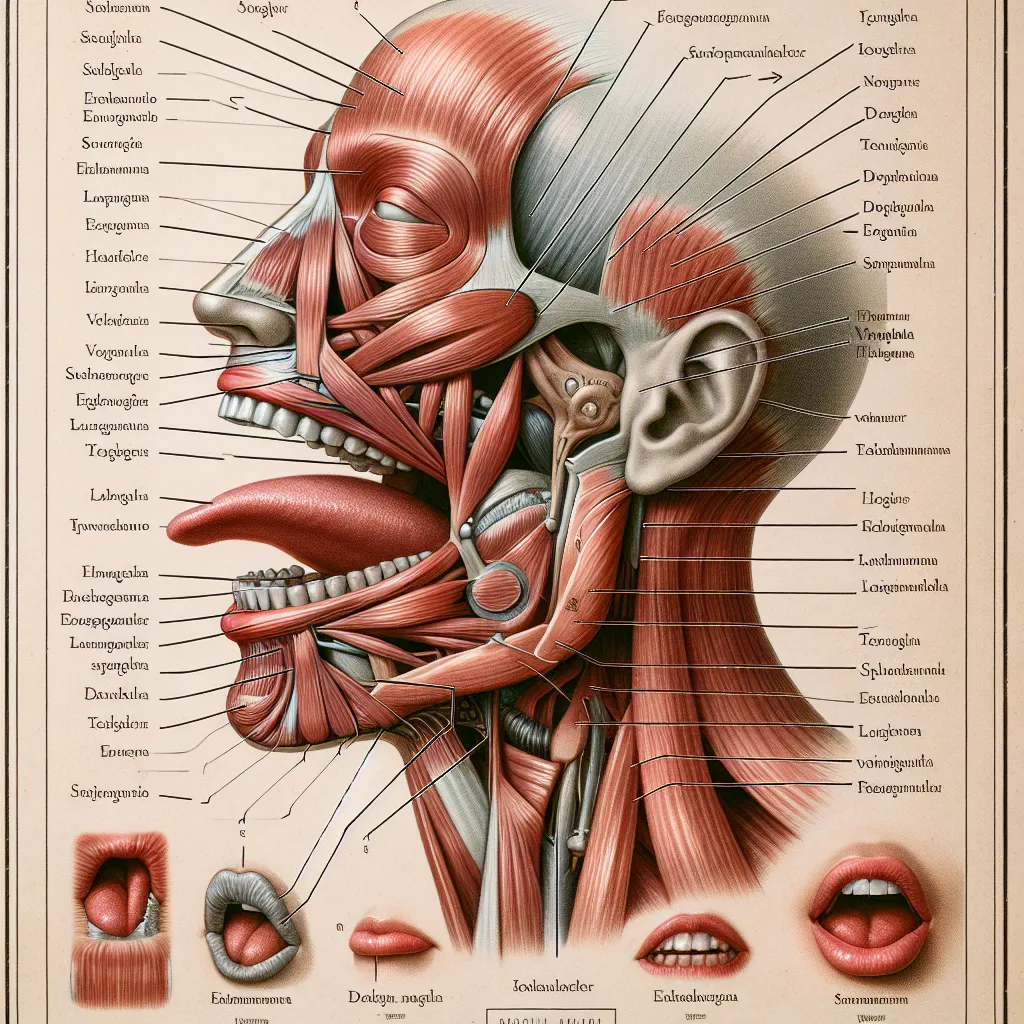Mastering English pronunciation can be a challenging yet rewarding journey. One effective method to improve your pronunciation skills is through mouth exercises. These exercises help train your facial muscles and improve your articulation, leading to clearer and more accurate pronunciation. In this comprehensive guide, we’ll explore How To Use Mouth Exercises For Pronunciation effectively.
Understanding the Importance of Mouth Exercises
Mouth exercises, also known as oral motor exercises, play a crucial role in enhancing pronunciation skills. They help strengthen and improve the coordination of the muscles involved in speech production, including the lips, tongue, and jaw. By practicing these exercises regularly, learners can develop greater control over their articulators, resulting in more precise and natural-sounding pronunciation.
The Science Behind Mouth Exercises
Research has shown that targeted oral motor exercises can significantly improve speech clarity and articulation. A study published in the Journal of Speech, Language, and Hearing Research found that participants who engaged in regular mouth exercises showed marked improvement in their pronunciation accuracy compared to those who did not.
 Diagram of mouth muscles used in pronunciation
Diagram of mouth muscles used in pronunciation
Key Mouth Exercises for Pronunciation Improvement
Let’s explore some effective mouth exercises that can help enhance your English pronunciation:
1. Lip Stretches
Lip stretches help improve the flexibility and control of your lips, which is essential for pronouncing sounds like /w/, /v/, and /f/.
- Exercise: Smile as wide as you can, then pucker your lips as if you’re going to whistle. Alternate between these two positions for 30 seconds.
- Example: Practice saying words like “weather,” “very,” and “free” after performing this exercise.
2. Tongue Twisters
Tongue twisters are excellent for improving overall articulation and can be particularly helpful for challenging sounds.
- Exercise: Start with simple tongue twisters and gradually increase difficulty.
- Example: “She sells seashells by the seashore” or “Peter Piper picked a peck of pickled peppers.”
3. Jaw Relaxation
A relaxed jaw is crucial for clear pronunciation. This exercise helps reduce tension in the jaw muscles.
- Exercise: Gently massage your jaw muscles in circular motions for 30 seconds.
- Example: After relaxing your jaw, practice words with open vowel sounds like “saw,” “law,” and “draw.”
4. Tongue Tip Exercises
These exercises improve the agility of your tongue, which is crucial for pronouncing sounds like /t/, /d/, and /n/.
- Exercise: Touch the tip of your tongue to your upper teeth, then to the roof of your mouth. Repeat 20 times.
- Example: Practice words like “tea,” “door,” and “noon” after this exercise.
5. Soft Palate Exercises
Strengthening your soft palate helps with nasal sounds and overall resonance.
- Exercise: Yawn widely, then say “ahh” while lifting the back of your tongue.
- Example: Practice nasal sounds like in “sing,” “ring,” and “hung.”
Common Pronunciation Mistakes and How Mouth Exercises Can Help
Many learners struggle with specific pronunciation challenges. Here’s how mouth exercises can address some common issues:
-
Th-sound (/θ/ and /ð/): Many non-native speakers find these sounds challenging. Tongue tip exercises can significantly improve the pronunciation of words like “think” and “that.”
-
R-sound: The English /r/ can be tricky for speakers of languages where this sound is pronounced differently. Lip and tongue exercises can help in mastering words like “red” and “car.”
-
Vowel distinctions: Exercises focusing on jaw and lip movements can help differentiate between similar vowel sounds, such as in “sheep” vs. “ship.”
-
Consonant clusters: Tongue agility exercises are beneficial for pronouncing complex consonant combinations like in “strengths” or “sixths.”
-
Intonation and stress: While not directly related to mouth movements, relaxation exercises can help learners become more aware of their speech patterns, improving overall intonation and stress placement.
For more detailed guidance on correcting pronunciation mistakes, check out our article on how to correct your English pronunciation mistakes.
The Phonemic Chart and Commonly Mispronounced Words
Understanding the phonemic chart is crucial for mastering English pronunciation. Here’s a simplified version of the chart, focusing on vowel sounds:
- Front vowels: /iː/ (beet), /ɪ/ (bit), /e/ (bet), /æ/ (bat)
- Central vowels: /ə/ (about), /ʌ/ (but)
- Back vowels: /uː/ (boot), /ʊ/ (book), /ɔː/ (bought), /ɒ/ (hot), /ɑː/ (father)
Now, let’s look at 10 commonly mispronounced words related to mouth exercises and pronunciation:
- Pronunciation (/prəˌnʌnsiˈeɪʃən/)
- Articulation (/ɑːˌtɪkjʊˈleɪʃən/)
- Phoneme (/ˈfəʊniːm/)
- Intonation (/ˌɪntəˈneɪʃən/)
- Diphthong (/ˈdɪfθɒŋ/)
- Syllable (/ˈsɪləbl/)
- Resonance (/ˈrezənəns/)
- Enunciate (/ɪˈnʌnsieɪt/)
- Palate (/ˈpælət/)
- Glottal (/ˈɡlɒtl/)
Practice these words regularly, focusing on the correct mouth positions and movements for each sound.
 English Phonemic Chart
English Phonemic Chart
Practical Tips for Incorporating Mouth Exercises into Your Routine
To make the most of mouth exercises for pronunciation improvement, consider the following tips:
- Consistency is key: Aim to practice for at least 10-15 minutes daily.
- Use a mirror: Observing your mouth movements can help you make necessary adjustments.
- Record yourself: Compare your pronunciation before and after exercises to track progress.
- Combine with listening practice: Listen to native speakers and try to mimic their mouth movements.
- Stay relaxed: Tension can hinder proper articulation, so always start with relaxation exercises.
For more tips on improving your pronunciation accuracy, visit our article on tips for improving English pronunciation accuracy.
Conclusion
Incorporating mouth exercises into your English learning routine can significantly enhance your pronunciation skills. By strengthening and improving the coordination of your speech muscles, you’ll be able to articulate sounds more clearly and naturally. Remember, progress takes time and consistent practice. Be patient with yourself and celebrate small improvements along the way.
We encourage you to start with the exercises outlined in this guide and gradually expand your practice routine. For beginners looking to improve their overall pronunciation, don’t forget to check out our pronunciation tips for English beginners.
Do you have any favorite mouth exercises that have helped improve your pronunciation? Share your experiences in the comments below, and let’s learn from each other!




